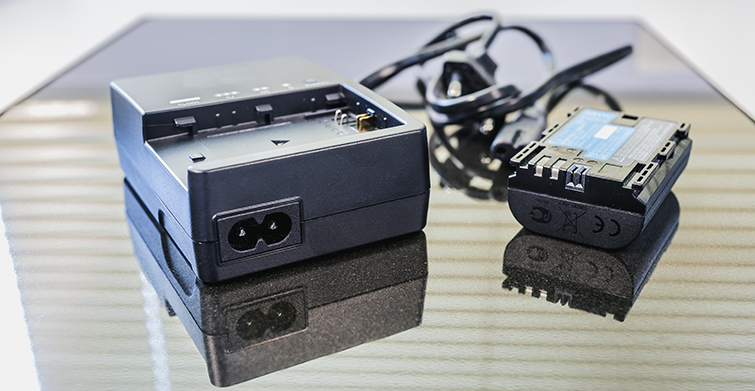
9 Common Filmmaking Mistakes to Avoid
The early paths of most filmmakers and videographers are littered with easy-to-avoid gaffes. Here are nine of the most common filmmaking mistakes and some easy ways to avoid them.
Top image via PremiumBeat (How many mistakes do you see?)
Filmmaking, at its heart, is a form of expression. It encourages freedom, experimentation, and innovation. There are an endless number of ways to set a shot, edit a scene, and tell a story. That being said, when you’re just starting out, there are several concepts, ideas, tips, and tricks which can help you make more thoughtful decisions in your filmmaking process.
Let’s look at nine filmmaking mistakes which you may want to explore to better understand the art and your voice as a filmmaker.
1. Forgetting Equipment or Arriving with Uncharged Batteries
 Image via Shutterstock
Image via Shutterstock
Again, things like this should be common knowledge (regardless of your profession), but it still persists. Working as a professional videographer means taking the time to organize and properly prepare your gear and equipment well before you walk out of the door. Keeping your gear organized with a systematic workflow for charging batteries, dumping/wiping cards, and keeping everything cataloged is paramount for any serious video professional.
2. Working With Dirty Lenses or Sensors
This shouldn’t be on the list. It should be common practice. Nonetheless, it still pops up a little too often. Camera lenses are made of glass. Glass gets dirty. You have to regularly clean glass to remove dirt and blemishes unless you want your shots to look dirty. Here are some resources on how get your glass to a spotless state.
- A Guide to Cleaning Lenses and Camera Sensors
- 7 Pro Lens Cleaning Tools Under $7
- How to (Not) Clean Your Camera
3. Shooting Out of Focus Shots
Once mastered, focus can be a great tool in your cinematic toolbox for directing the audience’s attention and telling your story. However, when you’re first starting out, if you can’t control it, focus (or more specifically, a lack of focus) can absolutely ruin your shots. Watch the video above on how to set focus and check out some of the following articles for a little more in-depth information.
- 3 Hacks for Shooting Without a Focus Puller
- The Best Follow Focus Options for Under $200
- What Are Focus Charts and Why Do You Need One?
4. White Balance Being Off
If you don’t understand white balance, you should definitely learn. If you don’t understand how to learn, you should definitely at least use auto-white balance.
There’s no excuse for shooting daylight footage white balanced for tungsten or vice versa. Here are some tips and tricks for working with white balance in post.
- Quick Tip: How to White Balance in Premiere Pro
- White Balance Footage in Final Cut Pro X
- DaVinci Resolve Tip: Use Color Keys to Fix White Balance
5. (Unintentionally) Breaking the 180-Degree Rule
Let’s be honest. The 180-degree rule is more of a suggestion than a rule. Of course, not having an understanding of what it is and why it works is the first step to creating confusing scenes and compositions which serve no direct purpose. If you can acknowledge your mastery of the rule first, you’re well within your rights to break it — as long as it’s done intentionally.
- Film Studies: 180-Degree Rule
- Quick Tips: Understanding The 180 Degree Rule
- Filmmaking Tutorial: 180 Degree Rule and Other Shot Sequence Tips
6. Under or Over Lighting Shots With Poor Set-Ups
When working in professional videography, lighting is usually the part of production which separates the amateurs from the seasoned pros. Taking the time to understand and properly set up lighting for a scene can be a huge part of telling a story and adding depth to a shot. Here are some helpful resources to consider.
- 5 Practical Cinematic Lighting Tutorials
- Lighting 101: A Quick Guide for Lighting Film
- 7 Steps for Lighting a Scene
7. Overusing or Improperly Using Warp Stabilizer
Warp Stabilizer is an effect in Adobe’s Premiere Pro (as well as After Effects). In itself, it is a powerful tool which can be used to stabilize shaky footage here or there — though it’s not always perfect and can’t work miracles on hopelessly unstable footage. It’s all too common to see it applied improperly and create waves in footage which can ruin a project. Here are some tips for how to properly use or avoid using it.
- A Comprehensive Guide to Making the Most of Adobe’s Warp Stabilizer
- Remove Warp From Warp Stabilizer Using After Effects
- 4 Tips for Warp Stabilizer in Premiere Pro
8. Not Taking the Time to Balance and Smooth Out Audio
Audio is simply too important to be last on the editing to-do list and first on the chopping block. Bad, inconsistent audio can ruin a video from the get-go, so it’s important to treat it, well, like it’s important. Here are some tips and tricks for balancing and smoothing out audio transitions.
- How to Crossfade Audio Tracks in Premiere Pro and FCPX
- How to Set Audio Levels for Video
- Audio Tips and Tricks: Removing Echo and Reverb
9. Incorrectly Formatting and/or Exporting
Whether you’re exporting for YouTube or television, you need to be intentional with your export and formatting settings. Many editing programs include helpful presets that are often ignored if you don’t know where to look. Here are some helpful resources.
- Everything You Need to Know About Exporting Video
- How to Properly Export Video for YouTube
- Quick Tip: Exporting Multiple Timelines in Adobe Premiere Pro
What were some of you earliest filmmaking mistakes and video goofs? Share your war stories in the comments below!





